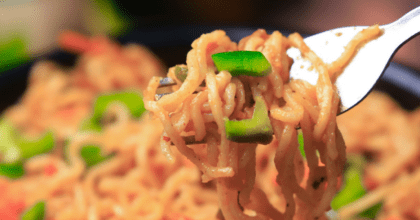Restaurants will have to serve two masters in 2011: the government and their customers
Chicago (November 10, 2010) – The foodservice industry demands change as often as the limited-time offers (LTO) at your favorite restaurant, and this year was no exception. In light of the recent healthcare bill that requires restaurants with 20+ units to list calorie counts on the menu, operators are now tasked with balancing federal regulations with the differing demands of their customers. Restaurant-goers value menu transparency, but still want the occasional indulgent dining experience. Mintel Menu Insight’s foodservice trends for 2011 are all about walking that fine line between open disclosure and customer satisfaction.
According to Eric Giandelone, director of foodservice research at Mintel,”Both the government and consumers want healthier menu options, but restaurant-goers are also very concerned about value and how their food tastes. Keeping both parties satisfied might be a challenge as we move into 2011. “
Trend #1: Healthy by Association
Sixty-two percent of consumers say they plan to eat healthier in the upcoming year, but many complain that healthier food doesn’t taste as good without the added sugar, sodium and fat. Restaurants will address this problem by swapping in ‘healthier’ ingredients to their patrons’ favorite dishes, and positioning them to appear better-for-you. For instance, Taco Bell has quietly reduced sodium at 150 stores in the Dallas market, while Jason’s Deli promotes its food as being free from high-fructose corn syrup (HFCS), trans fats or pesticides. Consumers enjoy visiting restaurants that are perceived as healthy because these venues make them feel good about themselves and their meal choices. Consumers might opt to visit the ‘healthy’ restaurant, but be wooed by the not-so-healthy LTOs offered at these places (see Trend #5).
Trend #2: Automated Menus
Convenience and technology will form the perfect union this year as restaurant-goers will see an increase in automated menus at their favorite establishments. These electronic order-takers will provide customers with the opportunity to order food to their specifications in do-it-yourself style, thus reducing the restaurant’s reliance on front-of-house staff, as well as full-time employees. Automated menus, in addition to mobile applications, will allow restaurants to reach a younger, more mobile consumer.
Trend #3: Transparency
Consumers want to know what they’re eating, and the recently passed healthcare bill mandates such disclosure. Restaurants with 20+ units are now required to list calorie counts on their menus. Consumers seem happy with the impending disclosure, as 61% agree that restaurants should post nutritional information, like calorie counts and fat grams, on menus. More cities will start forcing restaurants to visibly display their letter grades from local health departments, further increasing menu transparency.
Trend #4: Indigenous Ingredients
While the local food movement continues to grow, the push toward indigenous ingredients takes that trend a step further. In 2011, we will see restaurants incorporating more traditional or authentic ingredients to their ethnic or globally-positioned entrees. One example of this trend is Frontera Grill’s Panucho Yacateco, an entr
-
Mintel StoreGet smart fast with our exclusive market research reports, delivering the latest data, innovation, trends and strategic recommendations....View reports
-
Mintel LeapMintel Leap is a revolutionary new AI-powered platform that will transform your research process....Book a demo







































